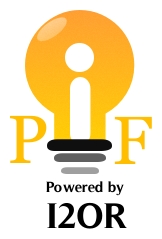A Study on Implementation of Intelligent Transport System to Bus Rapid Transit System (BRTS), Bengaluru - A Framework To Improve Present Public Transport |
| ( Volume 3 Issue 9,September 2017 ) OPEN ACCESS |
| Author(s): |
Sumedh Bang , Tanay N Bysani , Prof. Prashant. V, Dr. N.S. Narahari |
| Abstract: |
|
traffic congestion is a recurring problem not only in India but worldwide. In many states traffic is being a major hurdle due to urbanization and auto-mobilization. Karnataka is one of such states with fast growing cities such as Bengaluru have wide scope of rapid growth in economy and population; there is a raising trend of traffic congestion resulting in delay in reaching the destination. Bengaluru city has experienced a phenomenal growth in vehicle population in recent years due to city expansion, urbanization and independent culture. According to survey; the time taken to travel the same distance has seen a regular increase as Bengaluru’s traffic-choked roads are seeing an addition of roughly 5lakh vehicles each financial year, with the total number of vehicles in Bengaluru breaching the 60.59lakh mark this year. By February2016, the number of ‘non-transport’ vehicles such as two-wheelers and cars in the city had reached 54.67lakh. According to Transport Department, 41.86lakh two-wheelers dominated the city’s roads, followed by 11.8lakh cars. The number of transport vehicles stands at over 5.91lakh, 1.05 lakh taxis and 40,365 Buses. The city has seen a steady increase in the number of vehicles being registered from 41.56lakh in March2012 to 55.59lakh in March2015, and now over 60.59lakh by February2016. According to Transport Department at least 1lakh more vehicles had been added to this tally March2016. Statistics clearly indicate that the number of public transport is less and people opt for private vehicles as there is no proper arrival and departure times, delay due to unpredictable traffic, connectivity to exact destinations, convenience and reliability issues. With Bengaluru’s 12.33 million population bus transport is the most economical and affordable transport system from societal perspective. The rapid increase in the number of vehicles on the road has escalated the need for managing traffic flow efficiently to optimize utilization of road capacity. Public transport has huge delays to each stop due to traffic congestion during peak hours. A wells structured unique lane for BRTS can provide a high level of mobility, on time arrival, departure, reduction in the waiting time of passengers. The paper is a proposed idea for controlling and managing peak time traffic. With the trend of worldwide urbanization, an increasing number of vehicles are swarming into city road networks of limited capacity, leading to excessive increase of traffic congestion. As a result the major conglomerate junctions are operating over the capacity and average journey speeds on some of the key roads in the Central Area are lower than 10kmph in the peak hour. Therefore it has become necessary to establish plans for efficient traffic management in Bengaluru. The target of the study is to make uniform travel time for the people at both peak and non peak hours. This paper attempts to understand the application of Intelligent Transport System (ITS) in Indian context with case studies as a solution to the current traffic management practices. The use of modern amenities and efficient data communication has now become the basic requirements of all the services. |
| Paper Statistics: |
| Cite this Article: |
| Click here to get all Styles of Citation using DOI of the article. |
 Click Here for
Click Here for Track Your Paper

 Call for Paper
Call for Paper
